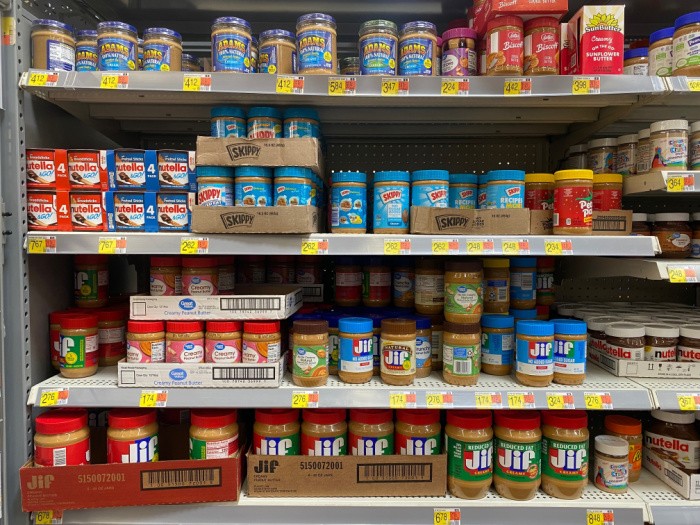
Based on my own shopping experiences lately, I recently wrote a post about some of the grocery items I noticed were in short supply on local store shelves. I was pleased but surprised at the comments and questions from the article, so today I want to expand on that subject and share 10 food shortages you need to stock. Please tell me the shortages you have noticed in your city or state.
I don’t drink a lot of soda and no beer, but I do like a few cans of soda to use when cooking some meat recipes in the slow cooker. Anyway, here is a discussion about those beverages, and a few more food items I have researched.
Yesterday, when I went to pick up a gallon of milk, they had “restrictions” on buying only one gallon. The egg shelf was nearly empty, and no buttermilk was to be found. The pasta shelves had about 5-6 packages on a 12-foot shelf. I’m hoping they were waiting for a shipment to fill those shelves. I’m not returning to find out since I’ve already purchased what I need.
We are all aware of the shortages in many industries caused by manufacturing cutbacks related to hurricanes, tornadoes, supply chain bottlenecks, labor shortages, the conflict in Ukraine, and the effects of climate change, such as drought and floods. All those may be contributing factors to the food shortages we’ll discuss, and I’ll try to provide some details so you can plan your strategy when filling your fridge or pantry.
Canned Meat Shortage
I just tried to order some Keystone canned meat (shredded beef), which also has restrictions. Some stores are sold out; you can buy six to 12 cans in some. The Keystone ground beef was available, but I don’t care. It’s too chewy.
In case you missed this post, 10 Grocery Items You May Have Trouble Finding
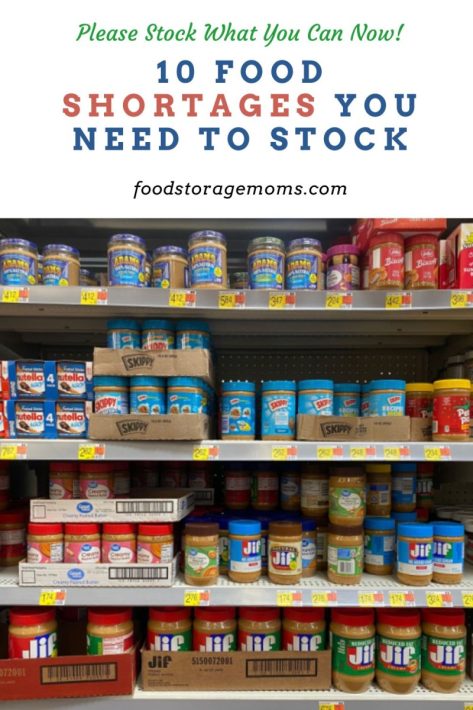
10 Food Shortages
1. Peanut Butter
Peanut consumption has significantly increased over the past few years, as reflected in an increase in per-capita use. I didn’t realize that over 50% of that consumption comes from the population eating peanut butter. With the rise in meat prices, many of us have turned to peanut butter as a great source of the protein we want, along with other nutritional benefits. This food item is also popular among our Vegan friends.
Several companies make peanut butter, including J.M. Smucker Co., which makes the most popular brand, Jif. Many retailers also have store brands, but Jif leads the pack by an extensive margin. Last summer, a recall for Jif was announced due to “potential Salmonella contamination” of the product. Note that you can claim a refund for your purchases through the manufacturer.
This recall was a double whammy since many of the groceries we buy include products made from the same peanut butter that Jif is made from. That could consist of treats like fudge. It is also reported that many peanut butter product options sold by Amazon are in short supply, but when I looked, you could still find a pretty good assortment.
You may find that there will be a shortage of Halloween-related treats made with peanut butter. The makers of Jif say they have worked through the recall issues and hope to be back to full production quotas soon. Economists have commented that this product’s supply and demand could prompt price increases, just like we’ve seen with prices in other food system sources.

2. Mustard
You may not be aware, but most of the mustard seed production we benefit from comes from western Canada and the northern states. This region has been affected by severe drought conditions, making growing the mustard plants that produce the seeds difficult. Since fewer acres have been planted in mustard plants, the trend for shortages in the resulting mustard for the near future and beyond is pretty high.
Reports from Wisconsin Spice suggest that production could be off by 50% since Canada produces about 75% of the global imports and 90% of what American producers need. Many European countries, including Ukraine and Russia, account for a significant supply of mustard seed, so the saga is repeated there.
No one will experience hunger without mustard, but we sure enjoy the flavor. Those of us who love Dijon Mustard, much of which is made in France, will miss it if the shortage continues for a longer-than-expected timeframe.
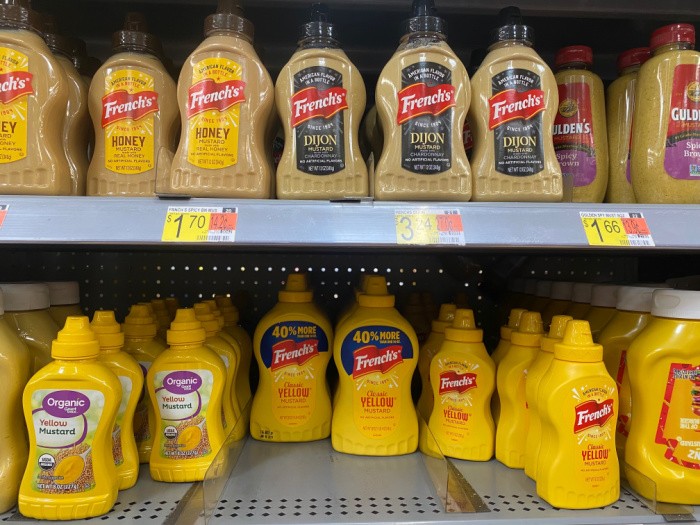
3. Milk
Milk production and the related costs and income have certainly been affected by the cost of livestock feed, product transportation, packaging, and other influences seen by food manufacturers and producers. I don’t view the situation with milk and milk-related products as a food crisis, but it certainly is cause for some concern due to the number of people and products that rely on a consistent supply.
Several “staples” we eat come from milk production, including butter, cream, and cheese. All these products compete for the milk that is the basis for each. Decisions regarding allocating reduced milk production due to higher logistical costs, agricultural production, labor shortages, and other factors will be harrowing.
Yes, there are some substitutes for regular milk, like soy milk and various nuts like cashews and almonds. The challenge for regular milk drinkers is that those options tend to cost a great deal more, and for milk purists, they don’t taste the same.
As we approach the holiday season and all the special meals, parties, and treats we look forward to during this memorable and fun time of year, don’t be surprised if you find some of your favorites in short supply. You may want to stock up on Augason Farms Instant Milk. I have Thrive Life and love it. But I have heard good things about this brand. Augason Farms states it lasts 20 years.
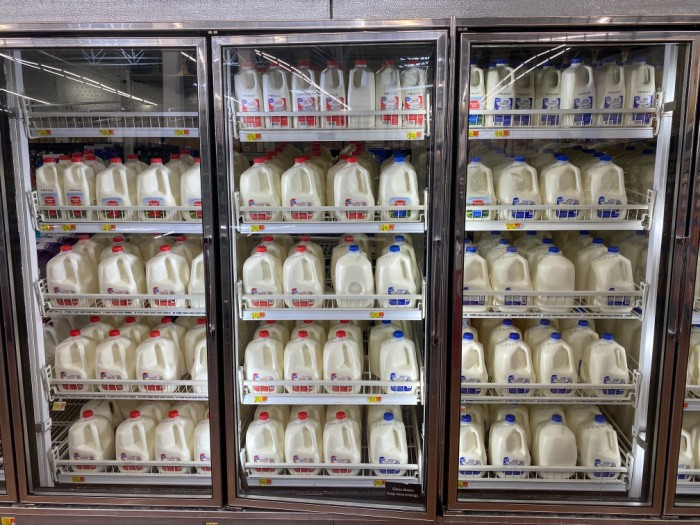
4. Tampons
This is one product with worldwide ramifications. Tampon availability is influenced by the same factors troubling our global economy: high costs for raw materials used to make them, higher fuel costs affecting distribution, and supply chain challenges. Many female-related products qualify for some government assistance and insurance support, but menstrual products don’t.
Even if families can locate what they need, they are forced to pay more for it, and that price increase has adversely affected millions of families.
Some inventory challenges result from the rising cost of the cotton, rayon, and plastic used to make the tampons. The pandemic tended to redirect many of these materials to make other medical essential products, putting a real squeeze on tampon production. Some family support groups are trying to supply these items, but they have to ration what they have so each family receives at least some supplies.
The Food and Drug Administration advises that tampons are designed to be used only once and then thrown away, so don’t ever try to reuse them. Also, don’t be tempted to extend their use by waiting an extended period to remove them. Trying to expand their use can lead to infection.
If you’re having difficulty finding what you need, rather than being tempted to hoard tampons for your inventory, consider checking out my post in which I suggest women consider homemade cloth pads. Although they may not be as comfortable and convenient, they are very cost-effective. You may also want to check out Reusable Menstrual Pads, which come highly recommended.
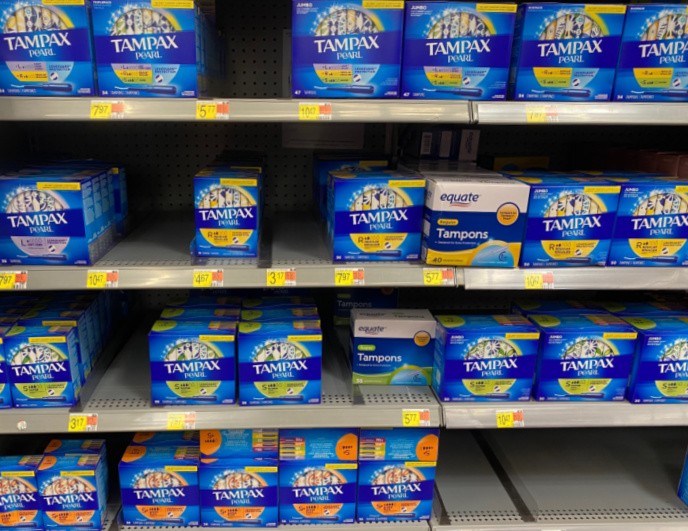
5. Baby Formula
Since early this year, the U.S. has experienced a baby formula shortage. Baby formula availability was already influenced by pandemic-related supply chain issues when an Abbott Laboratories plant was shut down after a federal investigation determined the manufacturer may be providing a product that caused bacterial infections in infants being fed the formula. Although the problem wasn’t widespread, with four babies being infected and two of whom died, it was considered a significant risk, which led to the closure.
This closure particularly affected low-income families since nearly 50% of the formula purchased in the U.S. is bought with federal funds under a WIC program. Many of the women under WIC assistance are more likely to use formula since they come from low-income families where the women have to return to work soon after the baby arrives, since their income is needed to support the family.
The company did begin manufacturing the formula, but it took a while to catch up due to the downtime. There may be another recall due to a recent test of the formula and some issues from those tests. We’ll have to see.
Other formula manufacturers make the Abbott product, so if you’re waiting for it, you may want to consider another brand. Pressure is being applied to allow more foreign-produced products to be sold in the U.S., but if successful, that could take a while.
If you can produce your breastmilk, you might consider seeing a lactation consultant or breastfeeding physician to see if your production could be increased. If you need a formula, make an effort not to waste it by monitoring how much the baby typically eats and filling the bottle to the appropriate level. Be sure not to dilute the formula since that could compromise the nutrients your baby needs to thrive.
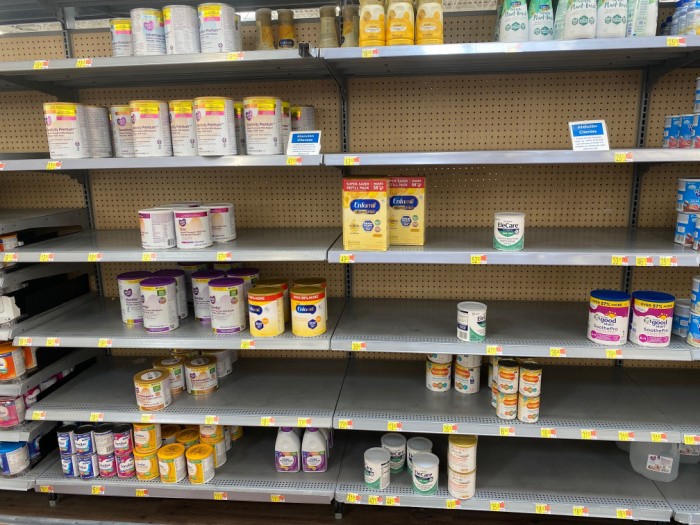
6. Sriracha Sauce
This is a hot sauce made from chili peppers. The largest manufacturer, Huy Fong, Inc., states that due to challenging weather conditions in regions where the chili peppers are grown, there will be a shortage this fall and winter. Severe weather caused a significant crop failure that reduced the spring harvest, but many of the chilis that survived didn’t meet the quality standards.
If this is one of your favorite sauces, you’ll probably need to look for a substitute. If you do have a source, please don’t be tempted to hoard what’s available so as many aficionados as possible can enjoy some, too.
I had to go to two stores to get a picture of these FOUR bottles, just giving you the heads-up!
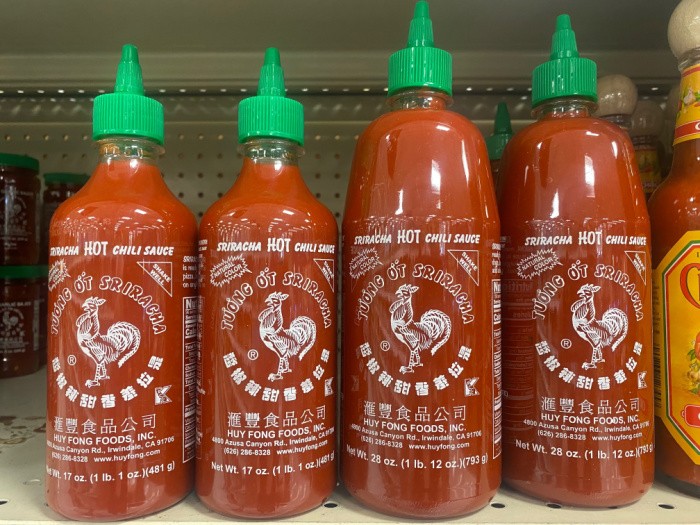
7. Hershey’s Chocolate/Chocolate in General
Although it’s one of my favorite treats, we don’t need chocolate to survive. Still, this is one food treat we look forward to this time of year, particularly around Halloween. Hershey’s told CNN that they have been gearing up for a robust holiday season, but as CEO Michele Buck says, the company “will not be able to meet consumer demand” for Halloween candy fully.
Unsweetened cocoa has doubled in price, and so have my semi-sweet chocolate chips, which I stocked up on last fall.

What’s being said, consumers from all quarters demand more candy, including chocolate. The company reported double-digit growth in sales in the last quarter compared to the previous year’s numbers. They speculate that we are all trying to make up for all the challenges brought on by the pandemic, inflation, high gas prices, and other distractions. We like to spoil ourselves; chocolate is a good “pain reliever.”
If you haven’t done so already, go to your local store and buy candy to spoil the trick-or-treaters coming your way in the fall.
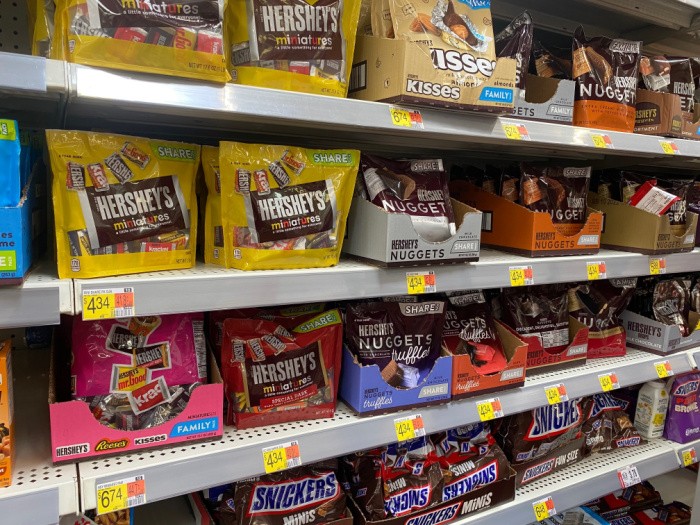
8. Beer and Soda
Both beer and soda companies have been affected by the supply chain issues caused by the pandemic. Many are still trying to regain full capacity after cutting back on essential staff.
The biggest challenge right now is a shortage of C02, and carbon dioxide. This is the ingredient in both beer and soda that gives it the bubbles and tangy texture. It also helps to keep the beer fresh. C02 is a byproduct of ethanol production, and ethanol wasn’t as needed when fewer people were using their vehicles as much during the pandemic, so more than half of the ethanol plants were closed during the pandemic. Those plants are gearing up, but achieving desired production levels may take a while.
Another source of C02 is a large reservoir in the Jackson, Mississippi, area called Jackson Dome. This extinct volcano released a gas that contaminated the reservoir during the summer, making the C02 unusable.
The big breweries are working on backup options for their C02, but the small microbreweries will be more drastically affected since they don’t have the financial resources to purchase new C02-generating machinery.
Another challenge to beer production is the recent poor barley harvests. Back in 2021, barley, a key ingredient in beer-making, had a less stellar harvest. The high heat and dry conditions in the Northern Plains and Pacific Northwest, where most of the barley is grown, scorched the barley.
The USDA indicated, “We’re seeing the lowest crop conditions of the century, which is only two decades old, but still the lowest crop conditions for spring wheat and barley across the Northern Plains.”
Another contributor to the shortage is the high demand for aluminum cans. Many consumers did more at-home drinking, prompting the need for canned drinks. If people drink in groups, it’s usually done in draft form in bars and restaurants. Yes, beer does come in bottles, but cans are easier to stack and store, making them preferable for many drinkers.

9. Tomato Products
Fresh tomatoes and products like ketchup and salsa could prove harder to find at your local grocery store. According to CNET, California, which produces 90% of the domestic tomatoes in the U.S., is suffering through a severe drought that makes it very difficult to grow this American favorite. CNN reports that nearly 37% of the farmers in California are abandoning existing crops due to the very dry situation.
This is very ironic since the Washington Post reports that in 2015 and 2016, American farmers cut back on planting tomatoes because there was an oversupply due to other countries reducing their imports of canned tomatoes from the U.S. because they cost more than people were willing to pay.
With the worst drought since the year 800, who knows how long the shortage may last, prompting the farmers to shift to other crops that don’t require as much water to survive and thrive.
This may be enough to influence some families to consider growing their own garden and including tomatoes in their garden plans.
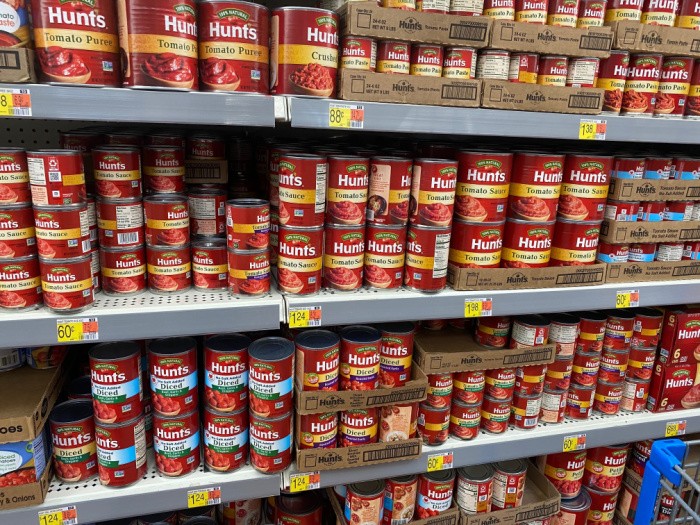
10. Olive Oil
The U.S., particularly California, isn’t the only country and region experiencing severe droughts, dragging down agricultural businesses. According to Olive Oil Times, Spain accounts for nearly 50% of the world’s olive oil supplies.
Spain has been experiencing massive heat waves, with more on the horizon every month. When temperatures approach 100 degrees and stay there for days, the olive trees suffer, and the olives aren’t as prolific.
Italy is another country the world relies on for olive oil. That country has also been experiencing its worst drought in the past 70 years. They expect a 20%-30% reduction in olive oil production this harvest year. I went to the store the other day to purchase some olive oil for my pantry since we had recently cooked a few meals and needed to replace what I had used.
I found a variety of olive oil brands, but noticed I was paying more than I expected based on previous olive oil shopping trips. I hope your experience proves to be different, but if you can find what you want, expect to pay more.
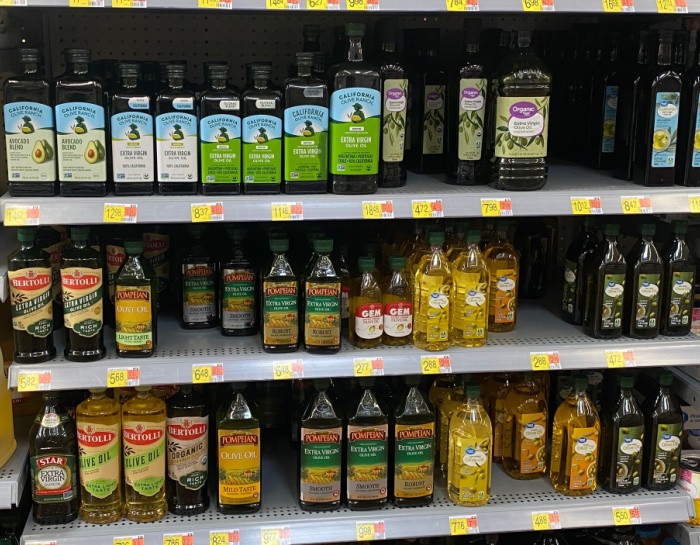
Final Word
I hope you look over this list of 10 food shortages. Some you may use, and some you never buy. No worries, but if some are critical to your family’s needs, please stock up on what you can. Check dates because nothing is worse than getting home and realizing the food expired last month.
We all have opinions on “best-by dates” or “expired dates,” but let’s be real when stocking the pantry. Since these items are experiencing some shortages, I expect the inventory to be pretty recent. May God bless this world, Linda
The post 10 Food Shortages You Need To Stock appeared first on Food Storage Moms.
from Food Storage Moms
No comments:
Post a Comment